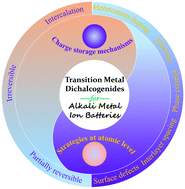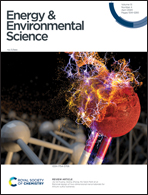Transition metal dichalcogenides for alkali metal ion batteries: engineering strategies at the atomic level
Abstract
In the past few decades, great effort has been made toward the preparation and development of advanced transition metal dichalcogenide (TMD) materials for anodes of alkali metal ion batteries (AMIBs). However, their electrochemical performance is still severely impaired by structural aggregation and fracture during the conversion reaction. To address these issues, various methodologies for the fabrication of hierarchical and hybrid nanostructures, with optimization of materials and electrodes, have been fully investigated and reviewed. As regards tuning the TMD-based materials, extensive efforts have been undertaken toward optimization of their intrinsic structure at the atomic level, including surface defects, interlayer spacing expansion, phase control, alloying, and heteroatom doping. However, the design strategies and methods to manipulate the intrinsic structures and electrochemical mechanisms in AMIBs have not been fully summarized. This review provides a well-timed and critical appraisal of recent advances in the engineering of TMDs at the atomic level for AMIBs, by combining computational and experimental approaches. The correlation between these strategies and electrochemical performance is highlighted. The challenges and opportunities in this research field are also outlined. We expect that this review would be beneficial for improving the overall knowledge on the charge storage mechanisms in TMDs and for pointing out the importance of intrinsic structure engineering for enhancing the performance of TMDs in energy storage.



 Please wait while we load your content...
Please wait while we load your content...